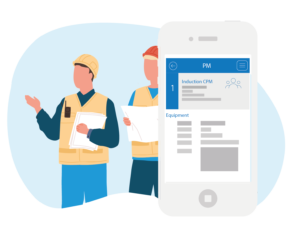Double Trouble for Real Estate: Coping with Two New Lease Accounting Standards
New accounting standards requiring businesses to bring leasing obligations onto their balance sheets will require many companies to get to grips with two different sets of rules – will your property management technology cope?
It has been billed as the biggest shake-up in accounting standards for 30 years, but many businesses are not yet ready for the introduction of new rules on leases. While the rules are due to come into effect in 2019 throughout the world, their property management processes and technology may not be fit for purpose.
The rules will for the first time require businesses to include on their balance sheets the value of all their obligations on leases that are longer than 12 months. But while they are expected to hit one in two publicly-listed companies and add $2.8 trillion to company balance sheets, many firms are not prepared. In one survey published last year 43% of respondents said they were not very well informed about the changes or that it was too early to tell what the impacts would be.
That’s worrying given that many businesses are actually facing two sets of changes they will need to prepare for. Not only does the International Accounting Standards Board’s IFRS 16 set out the process for bringing leases on to the balance sheet, but the Financial Accounting Standards Board’s Topic 842 in the US does the same thing. Many businesses with international operations are therefore going to have to cope with both.
The good news is that the IASB and the FASB worked together in drafting their standards with the aim of delivering a converged standard that would be consistent globally. Nevertheless, while the two organisations were united by a common purpose – to tackle the fact that 85% of lease agreements and commitments do not appear on the balance sheet – there are some clear differences between the processes they have put in place.
These differences begin with the effective dates of the two standards. While IFRS 16 isn’t due to take effect until 1 January 2019, Topic 842’s effective date is 18 December 2018, a couple of weeks earlier. More significantly, however, the IASB takes the single model approach while the FASB has opted for a dual model:
- The single model requires companies to account for all leases as “Type A” financing leases. The balance sheet therefore shows the acquisition of a right-of-use asset and a corresponding liability, with interest and amortisation expense recognised separately in the income statement.
- The dual model classifies leases as either “Type A” or “Type B” (operating leases with a generally straight-line lease expense pattern); both must be on the balance sheet, but the expense recognition and presentation are different.
Several other technical variations flow from this distinction. In the US in particular, the distinction between financing and operating leases will require additional work when compiling balance sheets and income statements.
Another issue, meanwhile, is adoption. Under IFRS 16, businesses are able to choose between fully retrospective reporting when accounting for existing leases, or a modified version; Topic 842 offers only the latter.
The question now for many real estate professionals – for property leases are likely to form the burden of most companies’ compliance work – is whether their property management technology is capable of coping with both sets of rules. Does it offer the functionality to identify and extract the key data under both IFRS 16 and Topic 842, and to feed that information into the finance department’s IT systems?
If not, the transition to the new standards is likely to be a painful one, requiring doubling up of effort and manual interventions to ensure compliance with both regimes, both at the transition stage and on an ongoing basis thereafter.
That will suck in resources that could be put to far better use elsewhere – and risk pitching the real estate function against finance as both grow increasingly frustrated about the unnecessary workload.
Takeaways:
- New accounting standards that come into force in 2019 will require companies to record the value of real estate leases on their balance sheets
- The new standards are being introduced by both the IASB and the FASB, with subtle differences between the two authorities’ approach
- Companies covered by both sets of standards must get to grips with the requirements of each one
- The IASB takes the single model approach while the FASB has opted for a dual model
For more information on our lease accounting solution, please visit the IFRS 16 page.
Affordable Housing Asset Manager Insights: Maximize Portfolio Performance by Supporting Housing Operators
From rising operational costs to increased demand for flexibility and technology, asset managers are navigating unique challenges to support property management teams while ensuring portfolio health and resilience. Recent MRI research delves into the…

